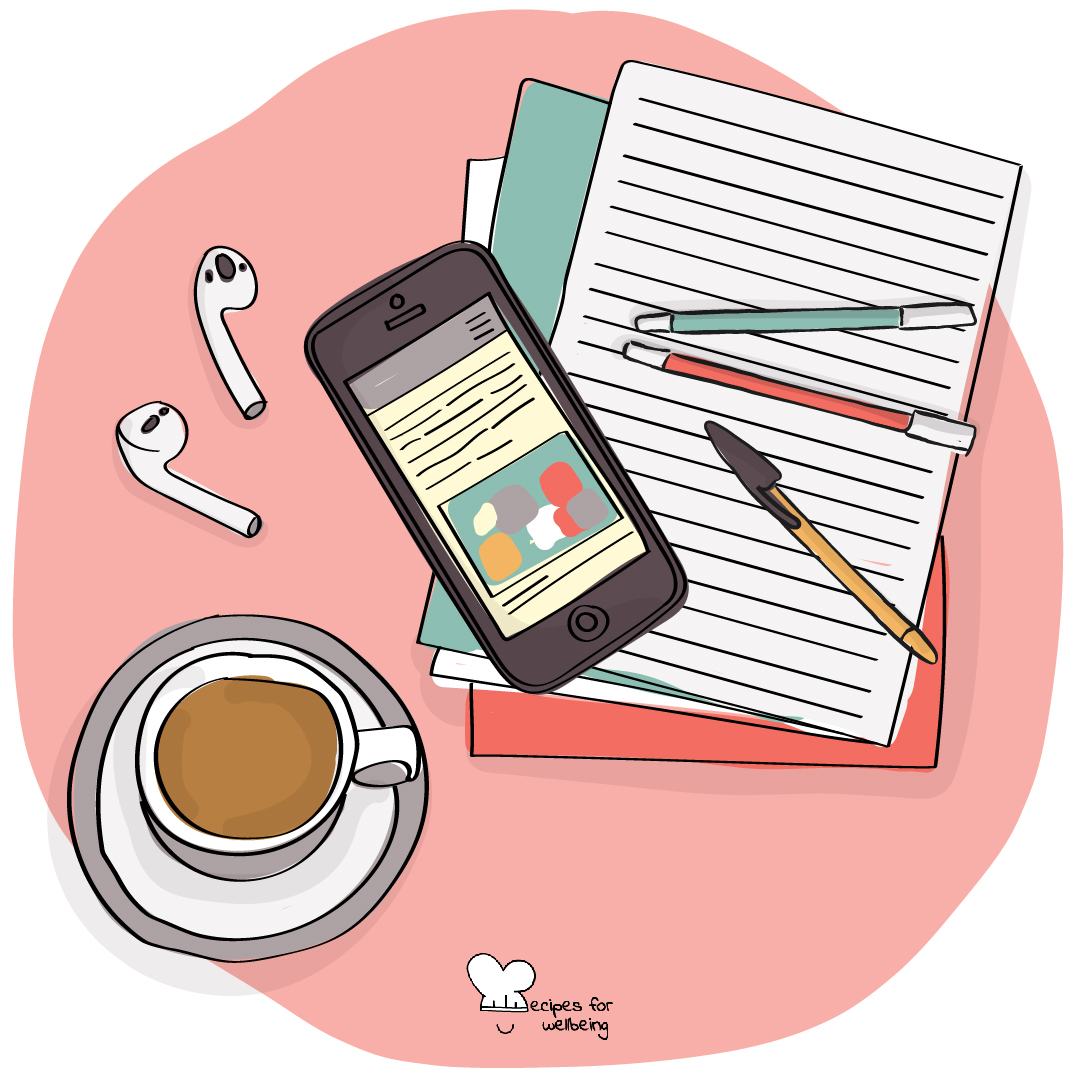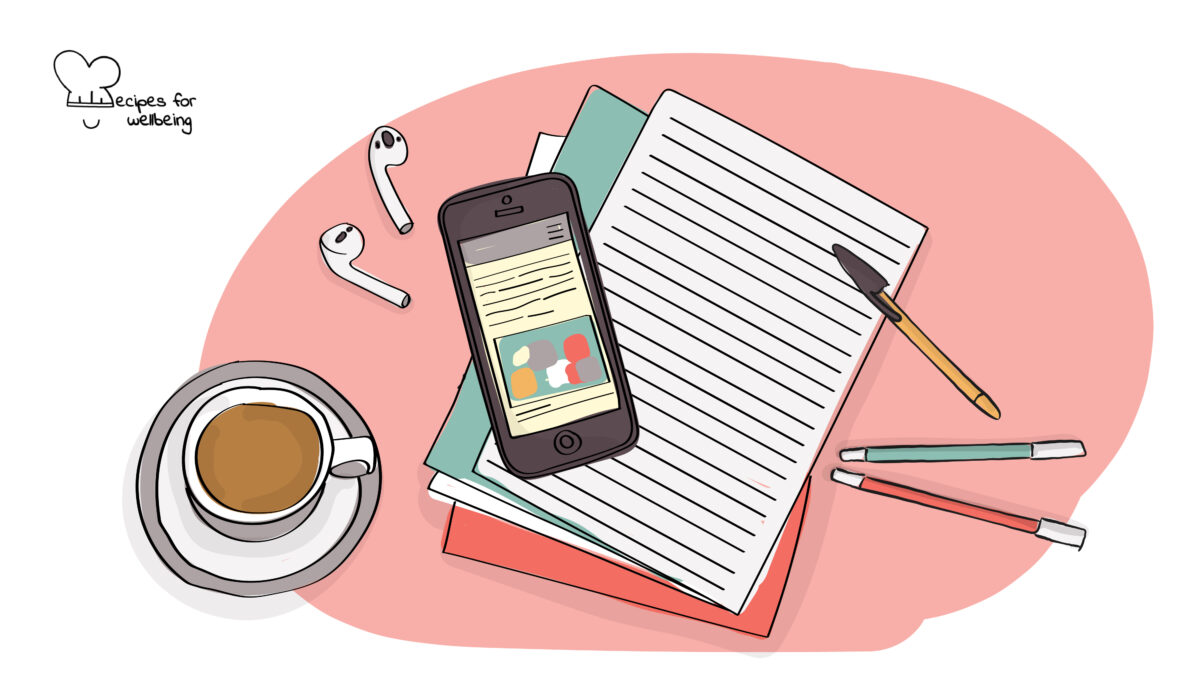
Smart studying with your phone
The time you spend mindlessly scrolling down could be spent mindfully absorbing knowledge. Choose wisely. ―Alex Morritt
👥 Serves: 1 person
🎚 Difficulty: Medium
⏳ Total time: Ongoing
🥣 Ingredients: Your smartphone
💪 Nutritional values: Digital literacy, Digital discernment, Awareness, Mindfulness, Presence

Smart studying with your phone
📝 Description
Discover the art of smart studying by harnessing the potential of your phone.
With access to books, notes, class recordings, educational videos, encyclopaedias, word processors, and much more, your smartphone can support your educational journey. The trouble is that your phone too often becomes a source of major distraction. Social media, streaming platforms, messenger apps, and games are all available and seeking your attention. The following recipe shares a few tips for using your phone to study without distractions and has kindly been donated by Alieyah Hendricks. Additional guidance for parents of teenagers can be found in this article: “The screen time diet: helping your team find balance”.
👣 Steps
Step 1 – Beware of passive screen time
Consider what type of time you spend on your phone: is it passive or active? Active screen time involves you engaging your mind to learn, create, or directly connect with others. Passive screen time is when you are absent-mindedly consuming content. Too much passive screen time can contribute to insomnia, mood swings, and screen addition.
If you rely on your phone to study, it is helpful to take note of this difference: how much time is active vs. passive screen time? Most smartphones calculate your screen time depending on the type of activity, e.g. social, education, information & reading, etc. Check your settings to see if you are getting too much passive screen time. Consider what activities might be contributing to your studies instead of distracting you from them. If you lack inspiration, check out the “Digital goodies” recipe.
Step 2 – Block distracting apps
Most smartphones include features to temporarily block access to certain apps so you can stay focused. Consider setting daily time limits for apps such as social media, or custom focus mode that restricts access to productive apps only. This tactic is particularly helpful if you find yourself regularly checking social media or entertainment apps.
Step 3 – Enable “do-not-disturb” mode
It is not just the apps, but the constant notifications for every call, text, or email that you receive that can be highly distracting. Different studies report different numbers, but it can take over 20 minutes for you to regain focus on a task after being interrupted. While a study by the University of California, Irvine and Humboldt University in Berlin report, to the surprise of the researchers, that “interrupted work is performed faster”, this comes at a cost: “higher workload, more stress, higher frustration, more time pressure, and effort”. Moreover, other research has found that social pressure can have a negative impact on your sense of autonomy and competence.
In addition to setting time limits or blocking certain apps, consider turning on the “do not disturb” mode to mute notifications and have a greater sense of control over your time. If you are concerned that people will not be able to reach you, set up automatic replies to let them know you will get back to them at a later time.
Step 4 – Use alarms
Timers on your phone can assist you in structuring your study sessions in short bursts of activity that help you stay focused. Check out “Pomodoro® Technique for wellbeing” recipe for a wellbeing-twist to the traditional format. Another fun variation is setting hourly alarms to pause for a minute and cultivate gratitude. Check out “The gratitude alarm” recipe for step-by-step instructions.
Step 5 – Check your commitment
Your smartphone can support you in your studies, if you manage to minimise distractions. Check on your commitment and your ability to follow through with your intentions. If you find yourself struggling, check out these additional recipes: “11 ways to improve digital boundaries”, “Building a conscious relationship with your phone”, and “Take control of your life with a digital detox”.

